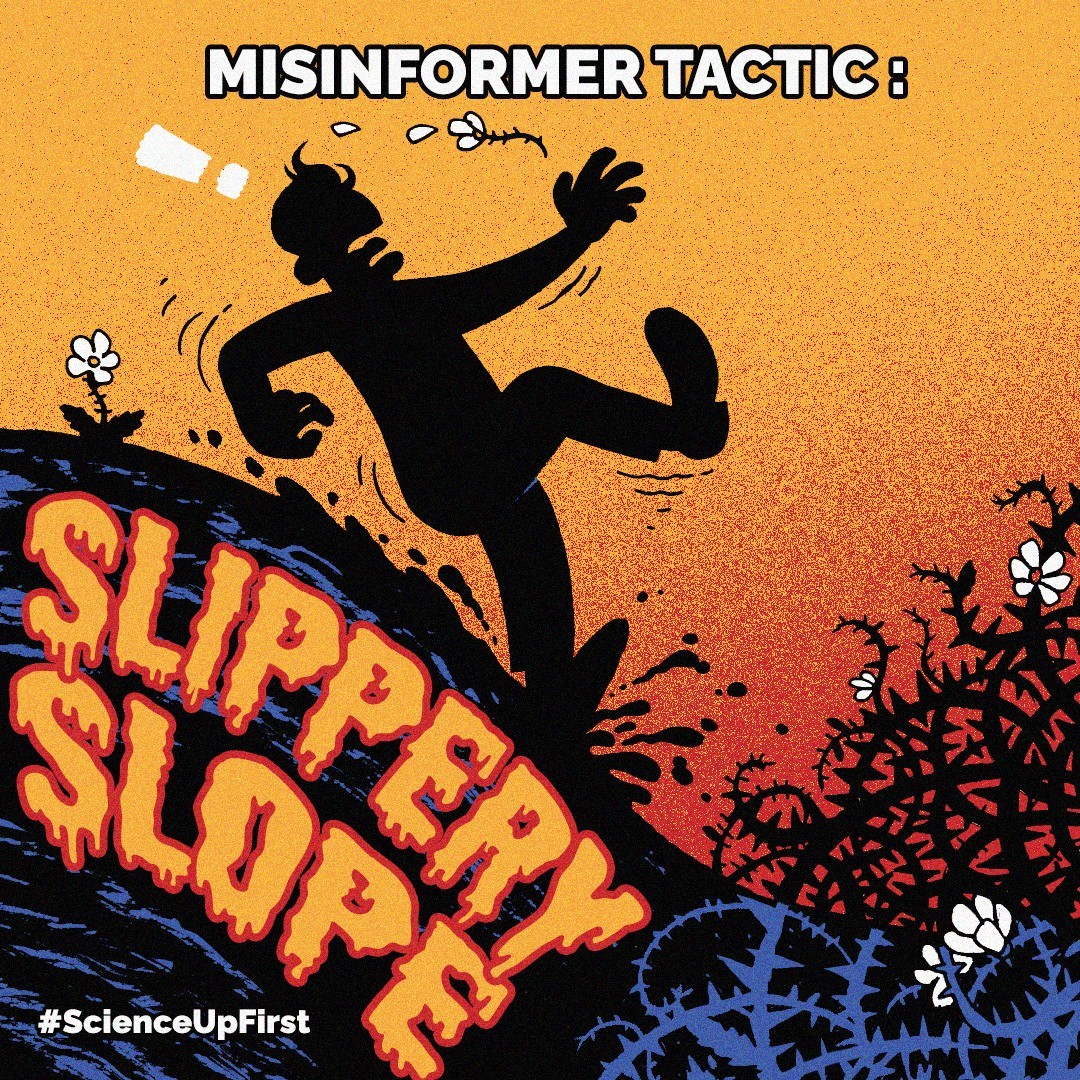
Do your thoughts ever spiral like this?
“If I fail today’s test, then I’ll fail my class, and I won’t get my diploma. Without my diploma I won’t get the job I want; I won’t have any money and will become homeless! Therefore, if I fail my test today, I’ll become homeless.”
Misinformers know catastrophic thinking pulls on your fear and anxiety (1,2). That’s why they will use this cognitive distortion to make you believe that a minor event could lead to a catastrophic event (2,3). By using the slippery slope tactic misinformers shift your attention from the real issue toward one that is hypothetical and unfounded using extreme exaggeration, emotions, and fears (4,5).
Slippery slope arguments always have a mild start point and an extreme endpoint with no way to stop in between and no middle ground. They are fallacious as they don’t acknowledge the small probability that one event will actually lead to the catastrophic event and assume your inability to differentiate between these two opposite events (5).
When dealing with a slippery slope argument, try pointing out (5):
- How pieces of information are missing
- How disconnected the different events are
- How far apart the start and end point are
- How it would be possible to stop in the middle if desired
Many thanks to Jordan Collver for collaborating with us on this project! Check out his work on his website (jordancollver.myportfolio.com) and on Twitter (@JordanCollver)
Share our original Tweet!
Do your thoughts ever spiral like this?
“If I fail today’s test, I’ll fail my class, and I won’t get my diploma. Without a diploma I won’t get a job; will have no money and will become homeless! Therefore, if I fail my test today, I’ll become homeless.”#ScienceUpFirst
[1/7] pic.twitter.com/IR6gKBMFbE
— ScienceUpFirst | LaScienced’Abord (@ScienceUpFirst) September 15, 2022
View our original Instagram Post!
View this post on Instagram




